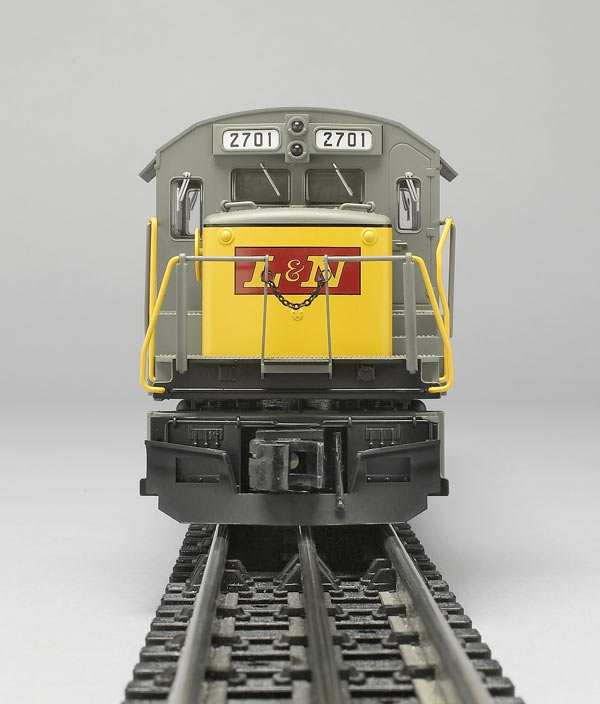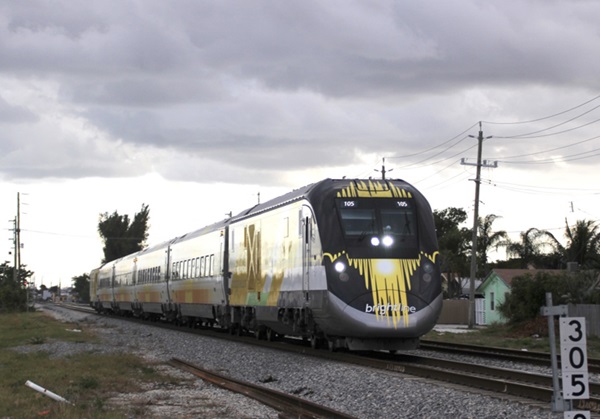Don’t let the model number fool you. The General Electric U23B came after the venerable U25B. Of course, the original U-boat, built from 1959 to 1965, demonstrated GE’s know-how in the road switcher business.
The U23B was an intermediate (2,250 horsepower) locomotive designed to fill the gap between low-horsepower road switchers like General Motors GP7s and GP9s, or the Alco’s RS-series diesels, and higher horsepower models made by GE and GM.
More than 400 were built from 1968 to 1977, and there can’t be many, if any, still in service. However, Massachusetts’ Quincy Bay Terminal Co. rosters an ex-Reading, Blue Mountain & Northern U23B, and this locomotive may be the last in common carrier service.
Our sample is decorated as Louisville & Nashville 2701 – one of eight ex-Monon units that the railroad acquired when it merged with the regional Indiana railroad. The no. 2701 is a Phase IIa U23B. The L&N went on to buy another 90 U23Bs (Phases IId and IIe) from GE. The car body of the later units was externally similar to the Phase IIa, with the most obvious difference being the trucks upon which the locomotive rode. The prototype photograph differs from the model, but the model is historically accurate.
Out of the box
This model has a hefty, solid feel to it thanks to the large metal fuel tank/speaker housing. The pilot has an add-on snowplow, brake line, and uncoupler arm. The decks have simplified (non-raising) drawbridges and safety chains, while the platforms all have cast-in safety tread.
The short nose has add-on handrails on top and a cast-in cap for sand. There are two headlight domes and number boards bracket the lights just above the cab windows. The photos that I could find of both the Monon and L&N U23Bs showed twin lights in the middle of the short nose that this model lacks.
The front and rear windows have add-on wiper arms, and the side windows have sunshades. A bell is mounted just behind the fireman’s side of the cab, and a horn is mounted on the roof just behind the cab. Also along the roof line is a silver-painted cosmetic exhaust stack (the model has no smoke unit), and the radiator screens are cast-in. There is a cast-in sand fill cap and add-on grab irons extend from the roof down to the rear pilot platform.
Latch and hinge detail is satisfactory and the frames for the cast-in louvers in the sides are suitably deep.
Painting and decoration of this model are very good. I like the gray Louisville & Nashville paint scheme, and the yellow nose with the red and yellow L&N logo is very well done. The finish was smooth and even, and the railroad herald was neatly reproduced.
Accent paint on the fuel tank catches the eye, and of special notice is the black accent paint over louvers on the car body. Although these are not see-through detail points, the dark coloration helps them contrast with the gray body and it looks sharp! The accent paint application was top notch.
On the test track
This was a very nice locomotive to run. It was responsive to throttle commands, especially when running it in TrainMaster Command-mode with a Lionel Legacy command base.
Our low-speed average was 15.8 scale miles per hour, and the high-speed average was 77.4 scale miles per hour.
The drawbar pull for the U23B was a respectable 1 pound, 9 ounces.
The sound package is quite good. The locomotive has a deep, robust voice and the horn and bell catch the ear. Though this is a Trainman line product, I thought the sound was more robust than that of the Atlas O Geep we reviewed in the September 2009 issue.
The only gripe I had with this model is the battery placement. I hadn’t realized how spoiled I’d gotten with the rooftop pull/pry/lift-off hidey-hole hatches used by the various manufacturers for battery access until I ran into this model. This really wasn’t a problem for me, but should you opt to install a battery, don’t follow the manual!
There are eight (the manual mistakenly lists six) screws to unfasten, and you don’t need to disconnect the handrails from the cab (per the manual’s diagram), because the entire plastic shell comes off as a single piece.
This is an excellent improvement in the product’s design, and Atlas gets a tip of the hat for improving ease of maintenance and access through the addition of two more screws.
The coil coupler opened flawlessly (the clunking sound of it opening never fails to get a smile out of me).
As noted earlier, this model, as part of the Trainman value line, does not have a smoke unit.
I was very pleased with this model. The Trainman line U23B is a well-built locomotive with good operating characteristics. The U23B will look right at home on any layout modeling the mid-60s through the 2000s.
Available in both conventional and Command versions, like that famous hamburger chain’s promise says, “You can have it your way.”
Price: $249.95 (Conventional), $399.95 (Command-equipped)
Features: O-36 operation, two can-style motors, directional lighting. Conventional version has horn and bell, Command-equipped has Lionel’s TrainMaster and RailSounds system and coil couplers.














